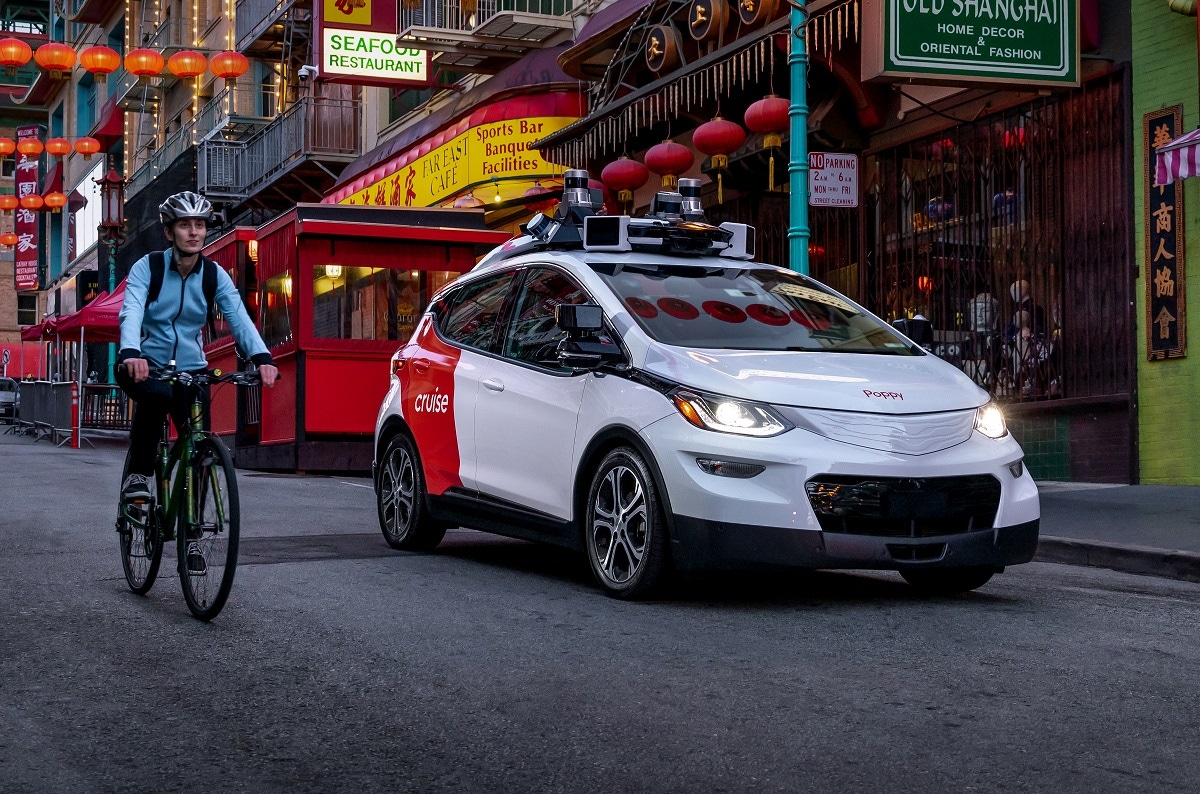V2X the Missing Link to Full AutonomyV2X the Missing Link to Full Autonomy
Ignoring vehicle-to-infrastructure connectivity is holding back driverless technology development.
November 29, 2023

Whether we are talking about roundabouts, intersections or maneuvering through the narrows, there are academic studies suggesting autonomous vehicle developers are not paying enough attention to connectivity.
Non-connected AVs not only have failed to show an advantage over human-driven vehicles, but they also have been shown to perform poorly. One example is cited in a recent article by a group of North Carolina State University researchers published in the journal Transportation Research Record. According to it, connected and automated vehicles (CAVs) can speed up the traffic flow at signalized intersections by up to 80%, depending on their share in overall traffic, while unconnected AVs slow it down by up to 20%.
In addition, a series of simulation and physical tests was conducted in 2020 by the Moscow State Automobile and Road Technical University (MADI). The behavior of AVs and CAVs was compared in frequent road situations such as pulling out into traffic from a merging lane and at a T-junction, overtaking through an oncoming lane and passing through a road repair zone. In any of these instances, AVs often were unable to safely conduct the maneuver because of poor visibility of the road ahead while CAVs did not have these issues.
More examples of similar conclusions could be found in peer-reviewed publications in the past five years or so. However, most recent articles by scientists from the U.S., EMEA and China imply the superiority of CAVs over AVs as a proven fact and focus on details of cooperative automated driving. “By the time we started our research, it was already evident that connected infrastructure is essential,” says Andrey Vorobyev, deputy head of MADI’s ITS competence center. “Our goal was to determine the minimal set of V2X (vehicle-to-infrastructure) services for safe and efficient autonomous driving systems and also technical requirements on them.”
So, what makes unconnected AVs worse drivers than humans? According to Ali Hajbabaie, the lead author of NCSU’s study and an associate professor of civil, construction and environmental engineering, it’s because state-of-the-art driverless systems are programed to drive in a conservative manner: “So, they often choose to go a little bit slower than other vehicles while maintaining larger distances to the vehicles in front of them. I think that the AV developers want to be conservative to make sure that the technology is mature enough.”
He thinks that after “a million more miles (1.61 million km) of training or so” the vehicles could be reprogrammed to a more dynamic behavior: “If we get into a situation when we’re comfortable with those vehicles’ capabilities, we could allow them to be less conservative. Then a decrease in traffic capacity might vanish or even turn into an improvement.”
Embed V2X Technology
However, embedding V2X technology into vehicles is an easier way to achieve that goal, Hajbabaie says: “When we compare non-connected AVs to connected ones, connectivity helps significantly because they can gather pieces of information they couldn't otherwise obtain from their own sensors. Also, it helps to verify the data perceived via their own sensors. As a result, each time we model connected AVs, the parameters can be less conservative.”
Consider the issues caused by Cruise and Waymo robo-taxis in San Francisco. “One thing seen in all these situations is that something unexpected had happened,” says Hajbabaie. “In one known incident involving a robo-taxi and a fire truck, the former could possibly not be trained to deal with first responders crossing an intersection on red light.” If both vehicles exchanged data via a wireless connection, the AV would be informed about a first responder coming and assuming the right of way long before its sensors detected the truck.
“Of course, the connected infrastructure won’t eliminate all unexpected events,” Vorobyev says. “However, it greatly helps to detect and process them earlier and better. Automated vehicles are in greater need of it than human drivers.”
It is clear that AV developers pay increased attention to the potential of connectivity, he says. It is hoped this shift toward V2X will help the AV industry’s sliding wheels get a better grip. Still, it will take a while for the ongoing studies to bear fruit: “It takes a certain level of maturity to take advantage of information obtained from the infrastructure.”
Hajbabaie adds: “Implementing our methods is far in the future. But it’s an example of the effects that connectivity can have for implementing full autonomy. Connectivity helps the whole system greatly and, actually, it's one of the ways to make sure that the presence of AVs in the flow is beneficial not only to their riders but to all road users.”
About the Author
You May Also Like